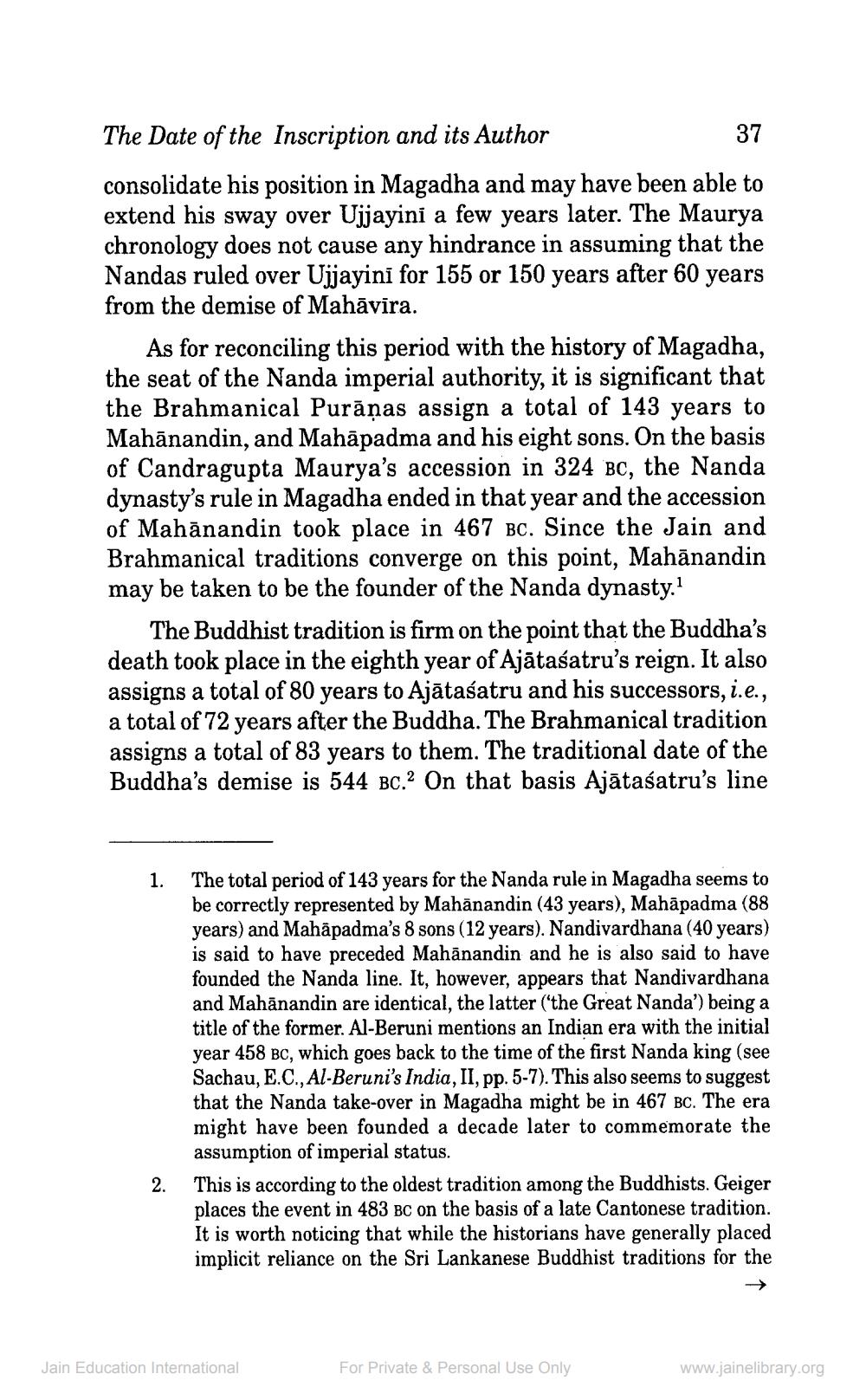________________
The Date of the Inscription and its Author
37 consolidate his position in Magadha and may have been able to extend his sway over Ujjayini a few years later. The Maurya chronology does not cause any hindrance in assuming that the Nandas ruled over Ujjayini for 155 or 150 years after 60 years from the demise of Mahāvīra.
As for reconciling this period with the history of Magadha, the seat of the Nanda imperial authority, it is significant that the Brahmanical Purāṇas assign a total of 143 years to Mahānandin, and Mahāpadma and his eight sons. On the basis of Candragupta Maurya's accession in 324 BC, the Nanda dynasty's rule in Magadha ended in that year and the accession of Mahānandin took place in 467 Bc. Since the Jain and Brahmanical traditions converge on this point, Mahānandin may be taken to be the founder of the Nanda dynasty.
The Buddhist tradition is firm on the point that the Buddha's death took place in the eighth year of Ajātasatru's reign. It also assigns a total of 80 years to Ajātasatru and his successors, i.e., a total of 72 years after the Buddha. The Brahmanical tradition assigns a total of 83 years to them. The traditional date of the Buddha's demise is 544 BC.? On that basis Ajātaśatru's line
The total period of 143 years for the Nanda rule in Magadha seems to be correctly represented by Mahānandin (43 years), Mahāpadma (88 years) and Mahäpadma's 8 sons (12 years). Nandivardhana (40 years) is said to have preceded Mahānandin and he is also said to have founded the Nanda line. It, however, appears that Nandivardhana and Mahānandin are identical, the latter ('the Great Nanda') being a title of the former. Al-Beruni mentions an Indian era with the initial year 458 BC, which goes back to the time of the first Nanda king (see Sachau, E.C., Al-Beruni's India, II, pp. 5-7). This also seems to suggest that the Nanda take-over in Magadha might be in 467 BC. The era might have been founded a decade later to commemorate the assumption of imperial status. This is according to the oldest tradition among the Buddhists. Geiger places the event in 483 BC on the basis of a late Cantonese tradition. It is worth noticing that while the historians have generally placed implicit reliance on the Sri Lankanese Buddhist traditions for the
Jain Education International
For Private & Personal Use Only
www.jainelibrary.org




